The first rays of morning filtered through the curtains as we woke up at Attabad Lake, still tired from the previous day’s journey but filled with anticipation. Last night, we had stayed at Lexus Hunza, a comfortable lakeside hotel overlooking the turquoise waters that shimmered in the moonlight. Attabad Lake is not only a visual delight but also a place steeped in history. Created by a devastating landslide in 2010 that submerged entire villages, the lake has now become one of Gilgit-Baltistan’s most picturesque locations. Last evening, we had marveled at the tranquil waters, the serene mountains, and the quiet of a place that combines both tragedy and beauty.
As I sipped my morning tea, I reflected on the previous day—the Minapin Glacier, the towering peaks of Rakaposhi and Diran, and the secret viewpoints that seemed almost unknown to the world. But today promised a different adventure: Shimshal Valley, one of Pakistan’s most remote and stunning locations, renowned for its rugged terrain, verdant valleys, and snow-capped mountains. I had visited Shimshal once before in 2016, and the thought of riding a motorcycle along its challenging roads filled me with a mixture of excitement and apprehension.
Breakfast and Preparations
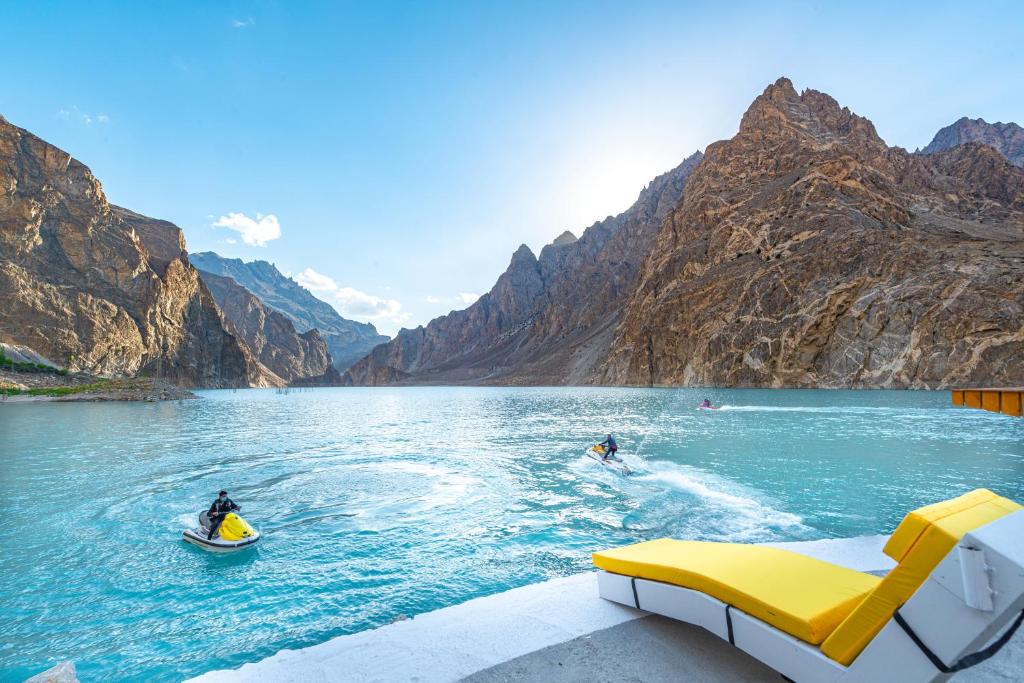
Our day began with a hearty breakfast at Lexus Hunza. The hotel offered a wide variety—continental, traditional desi fare, fresh bread, fruits, and even lassi. We opted for a combination: desi breakfast with eggs, parathas, bread, and homemade jam, fueling ourselves for the long day ahead. Breakfast here is complementary for guests, and the spread was generous, fresh, and delicious.
Before leaving, we offered a prayer for a safe journey. “Bismillah,” we said in unison, hoping for adventure without mishaps. Once our bellies were full and our motorcycles packed, we set out toward the Karakoram Highway (KKH), the gateway to Pasu and eventually Shimshal.
On the Karakoram Highway
The ride along KKH was scenic yet busy. The area around Attabad Lake had transformed dramatically over the years. Compared to my last visit in 2020, hotels, resorts, and construction sites had sprung up along the shoreline. While it was heartening to see world-class facilities for travelers, I couldn’t help but wonder how the concrete development would affect the natural beauty of the lake.
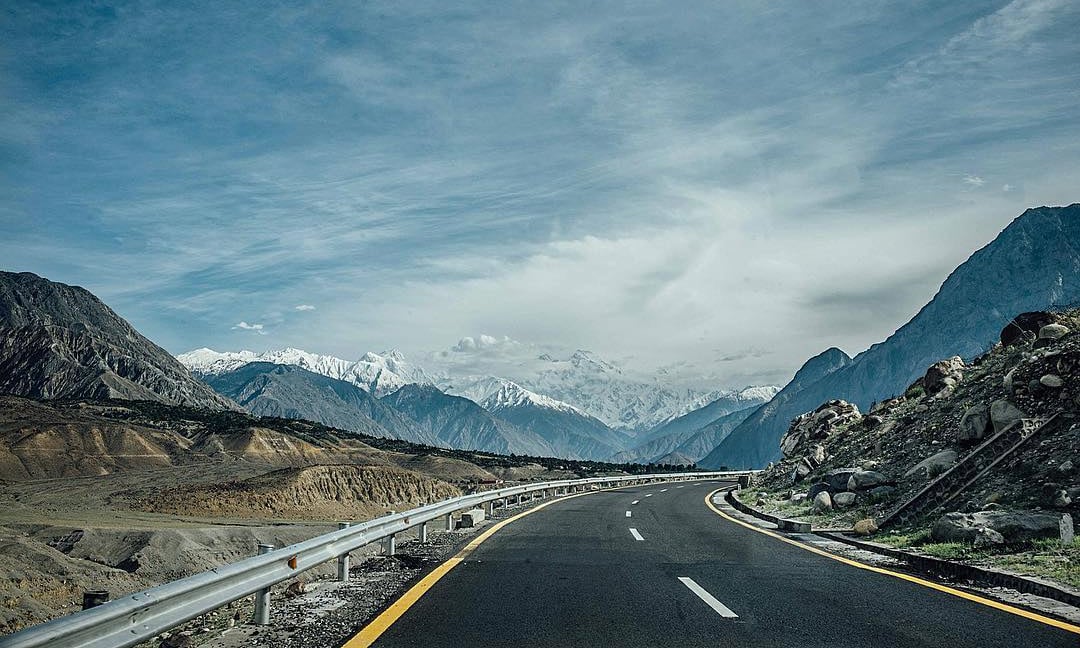
We passed through tunnels and bridges, reminders of the lake’s history. After the 2010 landslide, locals had ferried vehicles and travelers across the lake in small boats for several years. Today, modern tunnels had replaced those precarious crossings, making travel easier and safer. Still, as we rode past, I tried to imagine the challenges people faced back then, crossing the waters on tiny wooden boats while the lake’s icy waves lapped against the sides.
Entering the Off-Road to Shimshal
As we approached Gulmit, the gateway to Shimshal, the adventure truly began. The road left the KKH and transitioned from smooth asphalt to rugged, off-road terrain. This was no ordinary motorcycle ride—this was a journey through jagged mountains, alongside rushing rivers, across rocky tracks and narrow bridges.
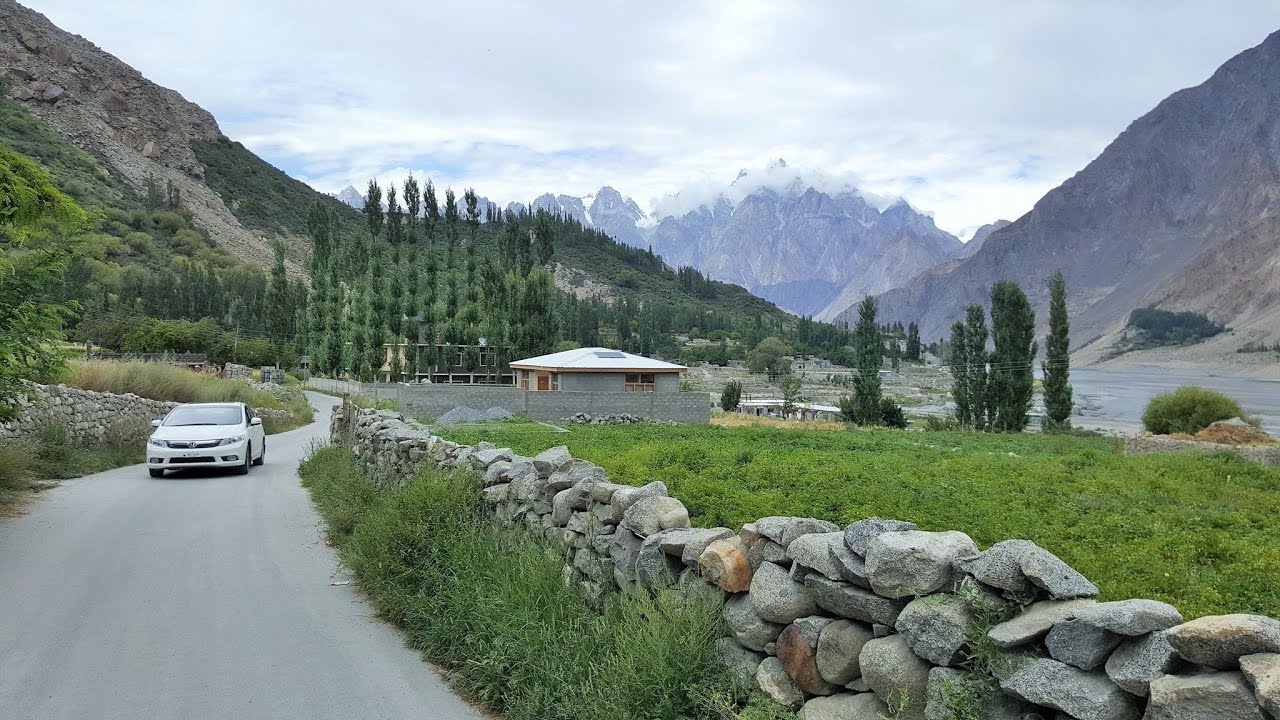
The first challenge came quickly: a torrent of water flowing across the road, a result of melting snow from the glaciers above. Riding through it required focus and care. Each pebble on the road threatened traction, and the fast-flowing water made the path slippery. We proceeded slowly, alert, and aware that even a minor mistake could lead to disaster.
Passing through these treacherous sections, I felt a surge of exhilaration. Pakistan’s landscapes are so diverse—one moment, barren rocky cliffs, the next, lush green valleys. Riding along this stretch, I was reminded of the mountains of Central Asia—Tajikistan, Kyrgyzstan—and the similarities were striking. This part of the Pamir range felt wild, untouched, and profoundly beautiful.
Suspension Bridges and Villages
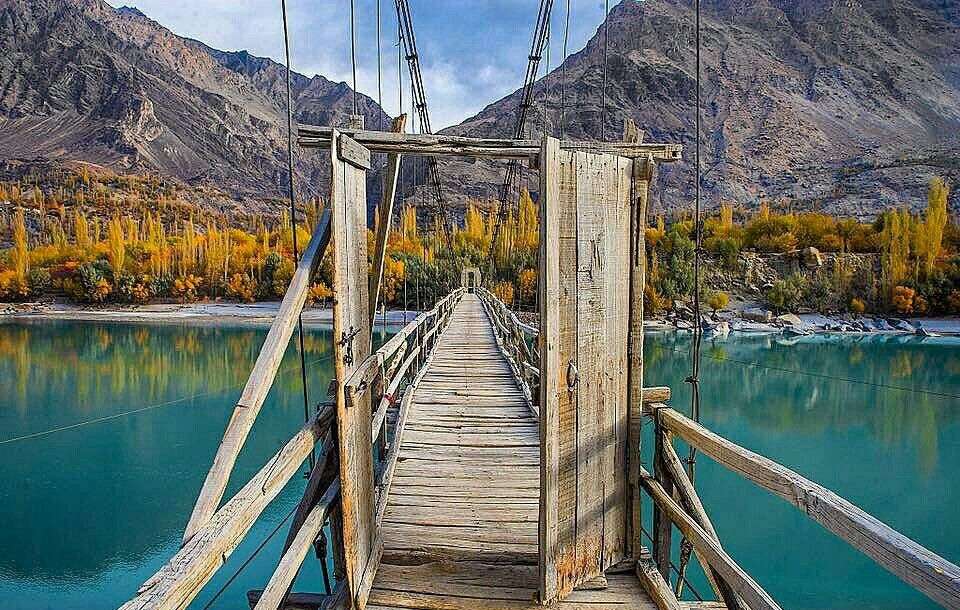
The track included multiple suspension bridges, swaying slightly with every motorcycle crossing. These bridges, suspended above glacial streams, added to the thrill and danger of the ride. One wrong move could have sent us into the icy waters below. Yet, crossing them safely brought a sense of triumph and awe.
Despite the harsh environment, some villages dotted the valley. The first glimpse of human habitation was striking. Houses made of mud and stone, simple yet well-maintained, appeared amidst the rugged terrain. Electric poles, dish antennas, and even a hint of network coverage from SCO telecom hinted at modern life in this remote region. It was incredible to witness a village thriving in such a challenging environment.
The people of Shimshal have always fascinated me. Much like the Sherpas of Nepal, Shimshali residents are renowned for their mountaineering skills. Foreign climbers often rely on them as guides and assistants for treks across Pakistan’s tallest peaks. Their resilience, skill, and deep connection with the mountains are legendary.
Scenic Wonders Along the Track
The further we went, the more the scenery transformed. The previous harsh rocky landscapes gave way to sandy plains, flowing rivers, and the mesmerizing Minapin Glacier. Its black-tinged ice contrasted sharply against the white snow-capped peaks. We paused to capture the glacier’s majesty and marveled at the river flowing beside it, alive with the snowmelt from higher altitudes.
At one point, the water from the glacier even crossed the road, submerging parts of it. Navigating this section was nerve-wracking, with the fast current helping our motorcycles along but demanding careful balance and precision. Even experienced riders had to take extra caution here.
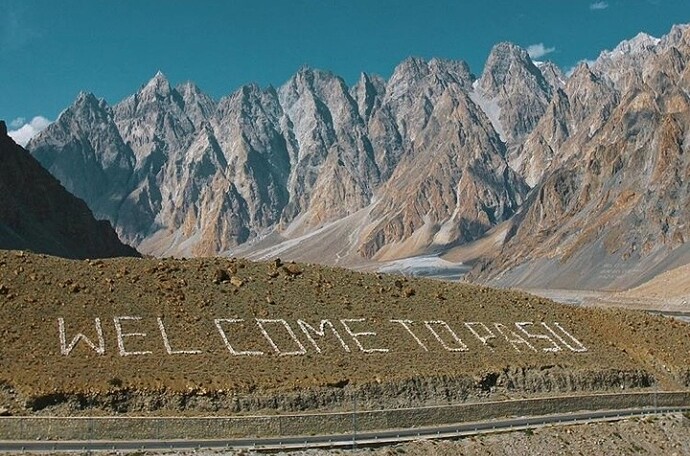
We covered a significant portion of the 56 km off-road track, but the journey seemed timeless. Every turn revealed new landscapes—steep valleys, cascading streams, and peaks reminiscent of the famous Pasu Cones, though far grander and more numerous. Each section felt like an adventure in itself, a reward for those willing to explore beyond the usual tourist routes.
Arrival at Shimshal Valley
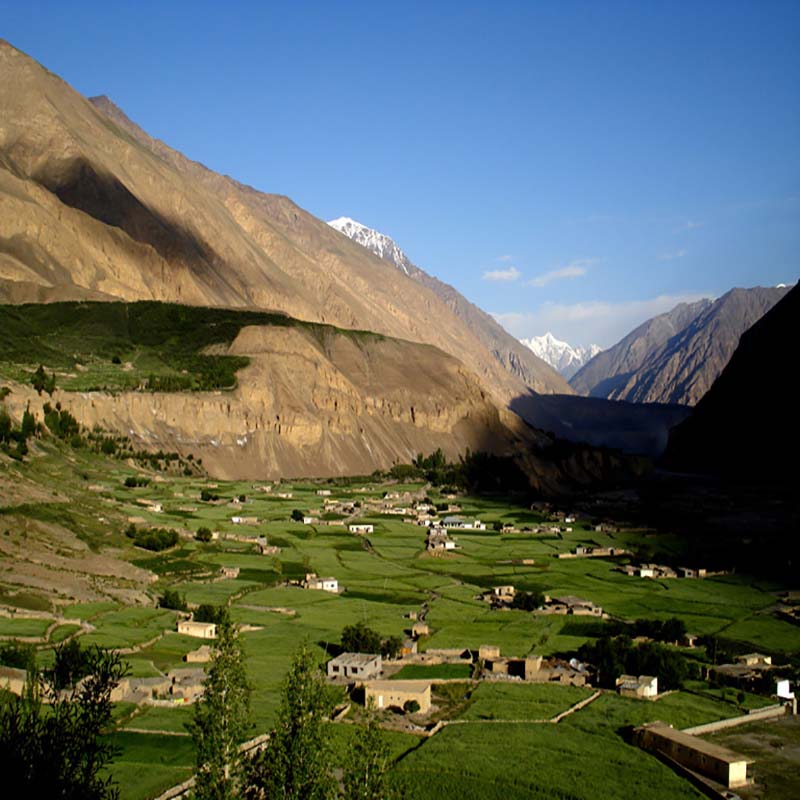
Finally, a sign greeted us: “Welcome to Shimshal Valley.” Entering the village felt like stepping into another world. The contrast from the previous rugged terrain was striking—lush green fields, cool breezes, and a well-maintained settlement nestled among the mountains.
The village was clean, orderly, and inviting. Small mud and stone houses lined the valley, and despite its remoteness, basic facilities like electricity and network coverage were available. We stopped at Shimshal Heights Hotel and Restaurant, a welcoming guesthouse where we ordered tea and light snacks. The hospitality was heartwarming, and the price—just PKR 540 for our small meal—was modest, reflecting the simplicity and charm of the area.
Shimshal is composed of four primary villages: Aminabad, Khizarabad, Center, and one more, totaling about 200 households. The population is roughly 600, and the literacy rate is remarkably high, especially considering the isolation. This is a community that thrives on education, mountaineering, and deep-rooted traditions.
Exploring the Valley
After a brief respite and a cup of steaming tea at Shimshal Heights Hotel, we set out to explore the valley. The moment we stepped outside, the cool mountain breeze greeted us, carrying the fresh scent of alpine grass and distant snow. Unlike the rocky, sunbaked stretches we had crossed earlier, Shimshal Valley revealed lush greenery, flowing streams, and meticulously maintained fields that spoke volumes about the resilience and hard work of its inhabitants.
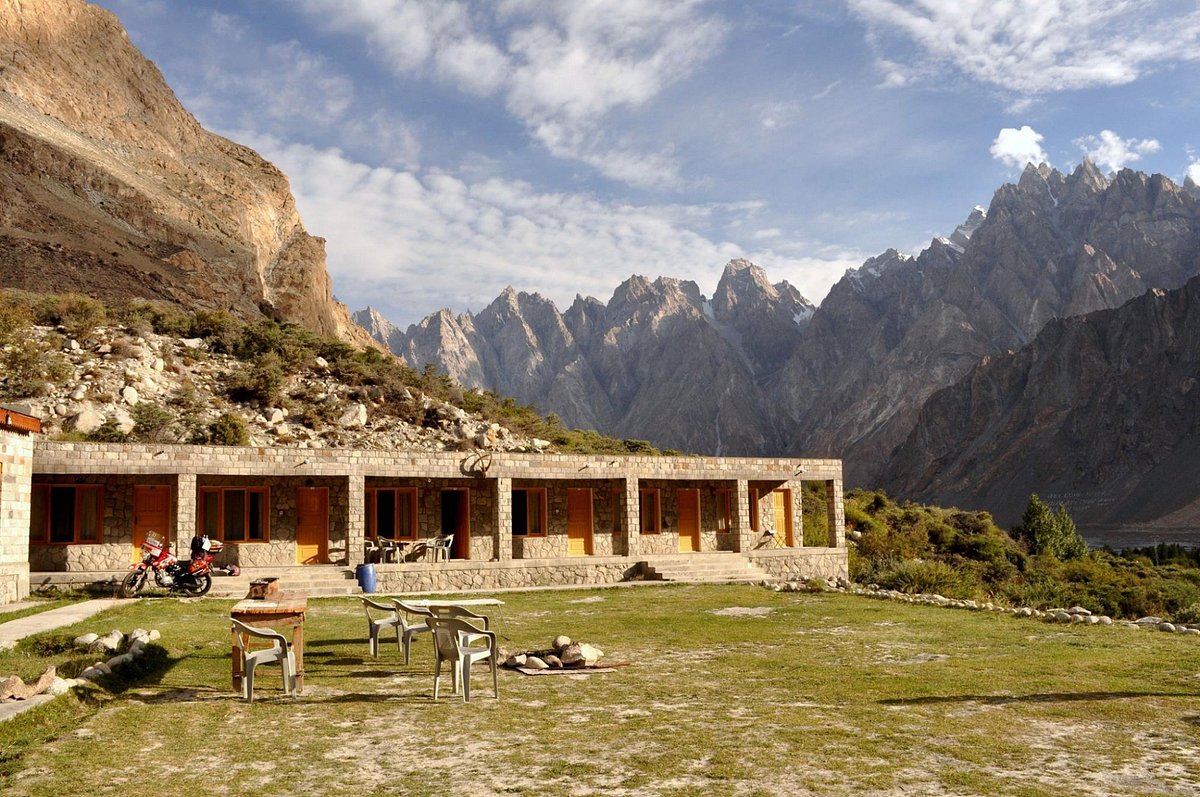
Walking through the village, I noticed the houses constructed from mud and stone, each unique yet harmoniously blending with the landscape. Satellite dishes perched atop some homes, a modern touch amid the timeless scenery, hinting at the blend of tradition and technology. Electric poles and wiring ran along the main paths, and small water channels, carefully carved from mountain streams, irrigated the fields. This juxtaposition of ancient and modern fascinated me—the locals had found a way to thrive in extreme remoteness without losing their cultural identity.
Children played near the streams, their laughter echoing across the valley, while elders tended to their animals or worked in the fields. The valley exuded a sense of calm, yet there was a quiet hum of life everywhere—proof that the Shimshalis had mastered the art of balancing survival with a profound connection to nature. I felt a deep sense of respect for them. This was a community that had endured harsh winters, landslides, and isolation, yet had built a thriving, self-sufficient home amidst the mountains.
We made our way to a viewpoint slightly above the main settlement, where the valley stretched endlessly before us. The peaks surrounding Shimshal, many still capped with snow, formed a dramatic backdrop, and I could see glaciers snaking down from the mountains, feeding the rivers below. The Minapin Glacier, which we had glimpsed on our way in, seemed even more majestic from this vantage point, its black-and-white ice glinting under the midday sun. The river running beside it roared gently, a constant reminder of nature’s raw power.
The locals informed us that Shimshal was divided into four main villages: Aminabad, Khizarabad, Center, and a smaller settlement. Together, they comprised about 200 households and a population nearing 600 people. Despite the isolation, the literacy rate here is impressively high, and most residents are educated. This was evident from the few conversations we had—the villagers spoke fluently and were eager to share their knowledge about the valley, the mountains, and the challenges of life in such a remote area.
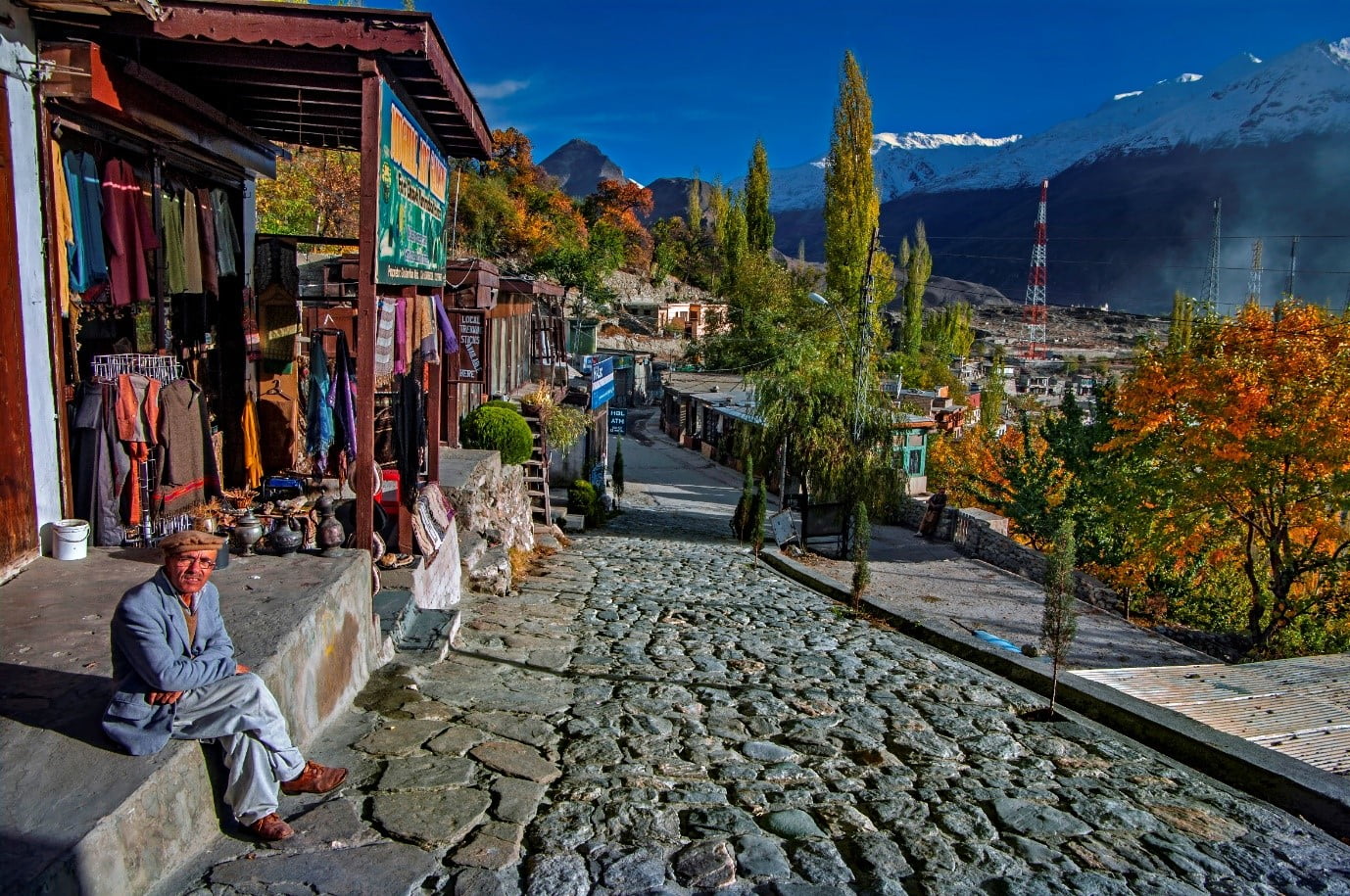
Shimshal is particularly famous for its mountaineering heritage. Much like the Sherpas of Nepal, the Shimshalis are globally recognized for their skills in climbing some of Pakistan’s highest peaks. Foreign mountaineers often seek their guidance, trusting their experience and expertise to navigate treacherous terrains. It was inspiring to learn that these mountains not only shaped the valley’s landscape but also the very identity of its people.
Continuing our walk, we stumbled upon small terraced fields, cultivated with wheat, barley, and other crops suited to high-altitude conditions. The careful irrigation and maintenance of these fields spoke of generations of knowledge passed down and perfected over decades. Even with such a harsh climate, the valley produced enough to sustain its people.
We also noticed several guesthouses and small hotels, including the oldest, Shimshal Tourist Lodge, which caters mostly to trekkers and mountaineers. Many travelers come here not just for the scenic beauty, but for multi-day treks that explore the surrounding peaks and glaciers. A typical trek from Shimshal can take four to five days, requiring endurance, preparation, and a deep respect for the terrain. Watching fellow travelers pass by with backpacks and trekking gear, I could sense the same thrill and excitement in their eyes that I had felt earlier in the day.
Even the simple amenities in Shimshal reflected the valley’s resilience. While internet access was limited and connectivity patchy, mobile phones worked thanks to a SCO telecom tower. Electricity was available throughout the village, and water from glacial streams flowed into homes via carefully carved channels. For a remote valley nestled in the heart of the Karakoram, Shimshal was remarkably self-sufficient.
We ended our exploration by walking along the riverbank, where crystal-clear water cascaded over smooth stones. The sound was meditative, almost therapeutic, and I found myself lingering longer than planned. The shadows of the surrounding peaks grew longer as the sun dipped behind the mountains, painting the valley in shades of gold and amber. It was the perfect time to reflect on the day’s journey—from treacherous off-road tracks and suspension bridges to the serene heart of Shimshal itself.
Every corner of this valley told a story: of struggle, survival, and mastery over nature; of a people who thrived despite isolation; and of breathtaking landscapes that remained largely untouched by mass tourism. Shimshal was a living testament to the beauty of Pakistan’s northern areas, an adventure for the senses and a humbling reminder of nature’s grandeur.
Challenges of the Road Back
The return journey was as thrilling as the ride in. Sections of the track were submerged in water, rocky paths required careful navigation, and the ever-present danger of steep drops kept us alert. Yet, the sense of achievement overshadowed the exhaustion. The combination of adrenaline, breathtaking views, and the thrill of riding off-road made this journey unforgettable.
As night approached, we reached Sost, our stop for the night. The Roomy Khawana Hotel awaited us, providing a clean, spacious room with hot water—a luxury after a long day on motorcycles and mountain trails. Dinner was simple but satisfying: biryani, a hearty meal to end an adventurous day.
Reflections on Shimshal
Shimshal Valley is not just a destination; it is an experience. It combines adventure, natural beauty, and cultural richness. The off-road journey to reach it is challenging, but the reward is immense. From the treacherous rivers and suspension bridges to the lush green villages and majestic glaciers, every moment leaves a lasting impression.
The valley’s remoteness ensures that tourism is still limited, preserving its pristine environment. Yet, the community is equipped to welcome travelers, offering guesthouses, tea, and local guidance. Shimshal is a place where adventure meets culture, and where every turn in the road tells a story of resilience, skill, and natural beauty.
For anyone seeking an off-the-beaten-path adventure, Shimshal Valley is a must-visit. It challenges your skills, rewards your perseverance, and leaves you with memories that last a lifetime. Whether you are a motorcyclist, a trekker, or someone simply in love with mountains, Shimshal promises an experience like no other.








